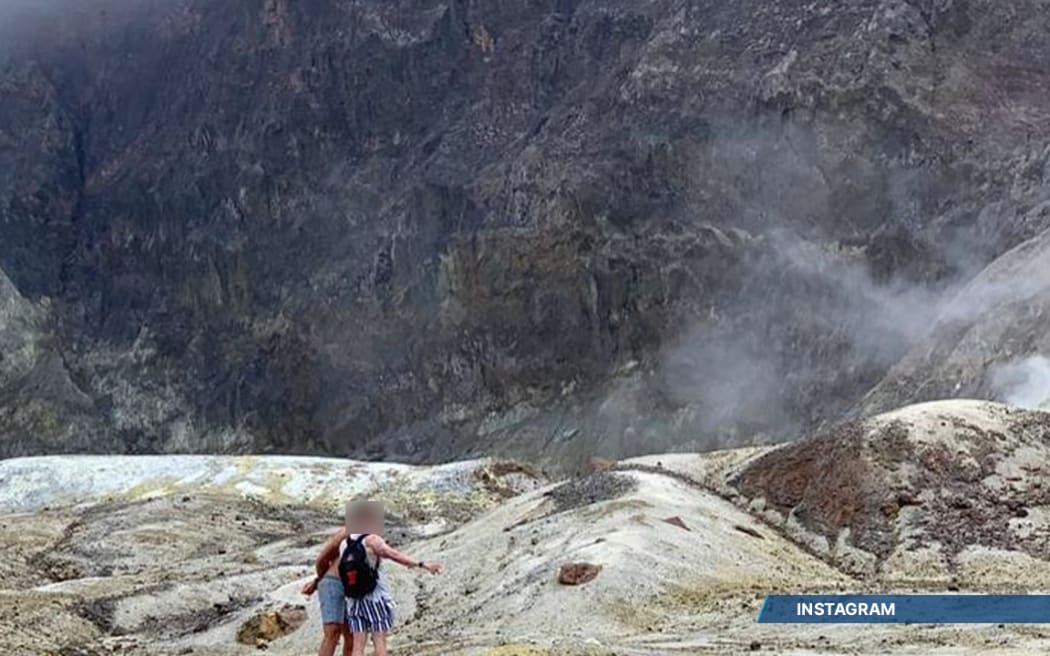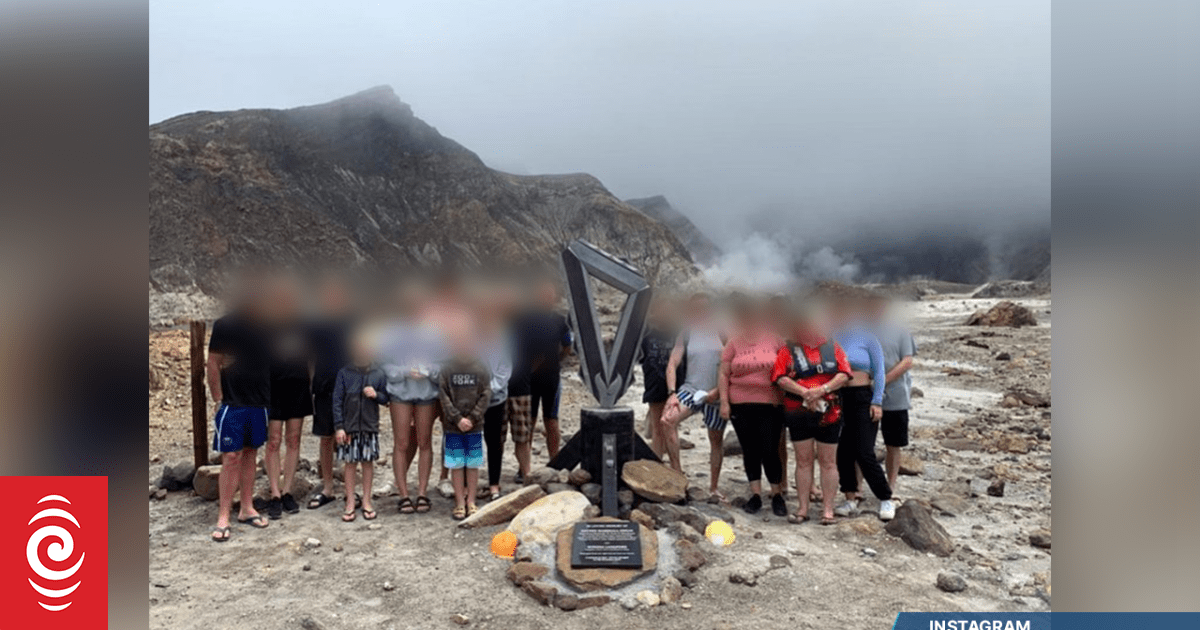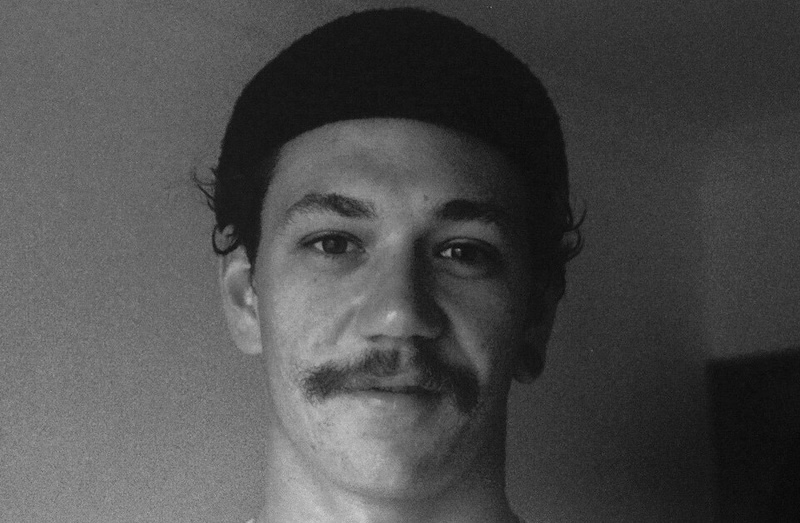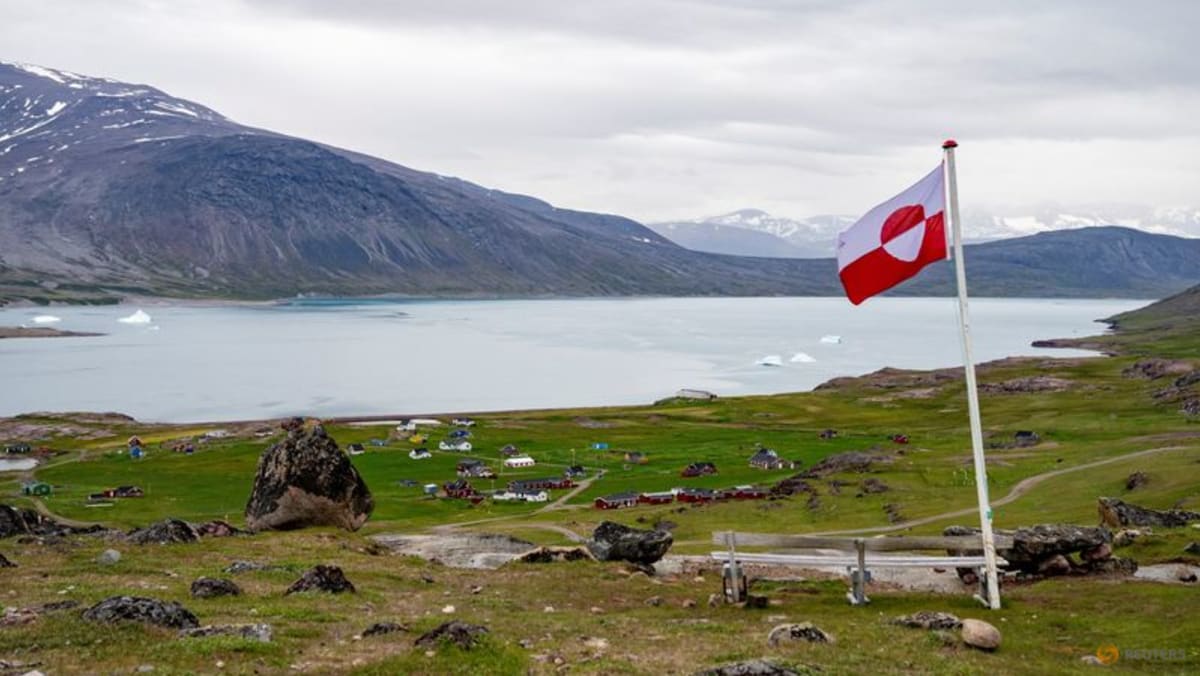Families of victims of the Whakaari/White Island volcanic eruption in 2019 returned to the island this week.
Photo: Supplied / Instagram
A group of nearly 20 people have ventured onto the Whakaari/White Island crater to lay a plaque remembering the 22 dead in the 2019 eruption.
They include victims’ family, at least one survivor, and a helicopter operator who rescued people on the day – but is also charged with health and safety breaches leading up to the tragedy.
Photos show a group, including children, surrounding the plaque did not wear hard hats, gas masks, or in some cases closed shoes – which had been used to help protect tourists from injury in tourist trips, leading up to tragedy.
But a spokesman says the group unveiling the plaque had a safety plan in place, and permission to go.
The island has been closed to visitors since it blew.

Families of victims of the Whakaari/White Island volcanic eruption in 2019 returned to the island this week.
Photo: Supplied / Instagram
The volcanic risk is at level 2 – heightened unrest – the same as the day of the deadly explosion, on 9 December 2019.
Mark Inman – brother of killed tour guide Hayden Marshall-Inman – said an exception was made for several trips to install the plaque on the island, and unveil it, this month.
“We’d had it in plans for a long time, it was just finding the right opportunity to get it out there. And it was fitting this year with the third anniversary and the fact that a lot of international families could come over this year.”
He had wanted to see a memorial on the island since the tragedy.
“It’s just nice to be able to recognise those who were lost on there, during the eruption. And recognise everybody. Because there is no place of recognition at this stage.”
Kāhu Helicopters owner Mark Law was in the group at the plaque. He returned to the island to rescue survivors on the day of the explosion.
He has since been honoured for bravery and is a finalist for New Zealander of the Year.
His company Kāhu Helicopters is also among 12 parties denying charges of health and safety breaches leading up to the tragedy.
Some of the charges the parties face are based on alleged inadequacies and absences of safety gear.

Families of victims of the Whakaari/White Island volcanic eruption in 2019 returned to the island this week.
Photo: Supplied / Instagram
While photos RNZ has seen do not show safety gear being used for the latest visit for the memorial, Inman said there were safety measures.
“We had a plan and we followed it,” he told RNZ.
“It’s just nice to be able to recognise people there. Rather than sort of trying to drag in the health and safety or anything dramatic. It’s a memorial on the island that recognises those that were [sic] passed away.”
Dr Pouroto Ngaropō (Mataatua, Te Arawa, Tainui, Takitimu, Ngātokimatawhaorua), who has acted as a cultural advisor for mana whenua Ngāti Awa, said he gave the trips his blessing – as a one-off for now “so that they [victims] are never forgotten”.
“Just imagine if there was nothing there, 800 years from now, 500 years from now. Possibly that whole incident, would be forgotten.”
There is no consensus on the future of frequent group visits to the island among iwi, but Dr Ngaropō is supportive of the idea in the long term.

Families of victims of the Whakaari/White Island volcanic eruption in 2019 returned to the island this week.
Photo: Supplied / Instagram
“We can’t deny the opportunity for other generations to come. We have a lot more scientific knowledge, Māori matauranga knowledge, and common sense knowledge. I think that yes, I would support the idea.”
When asked about the safety of the plaque unveiling he said the visiting group, who had suffered greatly, knew how dangerous the island could be.
“Level 2, Level 2.5, level 1.9. Any risk factor really, whether it is at Level 2 or any level, there’s always going to be a risk.”
GNS has not taken scientists back onto the island since the eruption.
Natural hazards and risks research lead Gill Jolly said GNS was doing extensive planning for a return to fix equipment on Whakaari, but no date had been set.
“Monitoring equipment on the island has not been serviced since the 2019 eruption and has deteriorated since that time. Our ability to assess near real-time activity, particularly at night, is now very limited.”
Jolly also said: “The monitoring equipment on the island began deteriorating after the eruption and failed almost completely in August this year in the absence of required maintenance.”
This has been so problematic that GNS was not able to determine in September whether a suspected eruption had indeed taken place.
When asked for comment, WorkSafe said: “WorkSafe is aware some people recently travelled to Whakaari. We are making enquiries to understand if any work-based activity occurred.”
When asked about the safety of the plaque visit, the Department of Internal Affairs’ local government policy and operations general manager said: “The Minister of Local Government is responsible for any part of New Zealand that is not already part of a local authority district. This includes Whakaari/White Island.
“In practice, there are limited legislative functions for the Minister due to the Island being uninhabited and privately owned.”
RNZ has also contacted a survivor, NZ Police, a lawyer representing the island’s owners, Kāhu Helicopters and the Ngāti Awa rūnanga for comment.





















Discussion about this post